11 mai 2021
Seminar by Christophe Le Clainche (I2BC, Gif-sur-Yvette) May 11th, 2021
Christophe Le Clainche / seminar via Zoom this coming Wednesday at 11 AM;
Understanding cellular mechanotransduction through the reconstitution of actomyosin-dependent mechanosensitive protein machineries in vitro
Abstract
During cell migration, the mechanosensitivity of focal adhesions allows cells to adapt the adhesion strength to the force of the cytoskeleton and the physical properties of the extracellular matrix. Although it is well established that the mechanical stretching of the actin-binding protein talin controls this process, the biochemical mechanisms remain largely unexplored. Several studies suggest that talin encodes mechanical information by selecting its binding partners, such as RIAM and vinculin, in response to the force exerted by the actomyosin cytoskeleton. We designed an in vitro microscopy assay with purified proteins to study this mechanism. In this assay, actomyosin force controls the binding of RIAM and vinculin to talin immobilized on a micropatterned surface. We demonstrate that actomyosin triggers the sequential exchange of RIAM for vinculin on multiple domains of talin. Finally, by combining kinetic studies in fluorescence spectroscopy and single-molecule observation in fluorescence microscopy we determined that the talin-vinculin complex that results from this mechanosensitive process controls actin assembly.
During cell migration, the mechanosensitivity of focal adhesions allows cells to adapt the adhesion strength to the force of the cytoskeleton and the physical properties of the extracellular matrix. Although it is well established that the mechanical stretching of the actin-binding protein talin controls this process, the biochemical mechanisms remain largely unexplored. Several studies suggest that talin encodes mechanical information by selecting its binding partners, such as RIAM and vinculin, in response to the force exerted by the actomyosin cytoskeleton. We designed an in vitro microscopy assay with purified proteins to study this mechanism. In this assay, actomyosin force controls the binding of RIAM and vinculin to talin immobilized on a micropatterned surface. We demonstrate that actomyosin triggers the sequential exchange of RIAM for vinculin on multiple domains of talin. Finally, by combining kinetic studies in fluorescence spectroscopy and single-molecule observation in fluorescence microscopy we determined that the talin-vinculin complex that results from this mechanosensitive process controls actin assembly.
Participer à la réunion Zoom
ID de réunion : 814 4273 7787
Code secret : 042836


